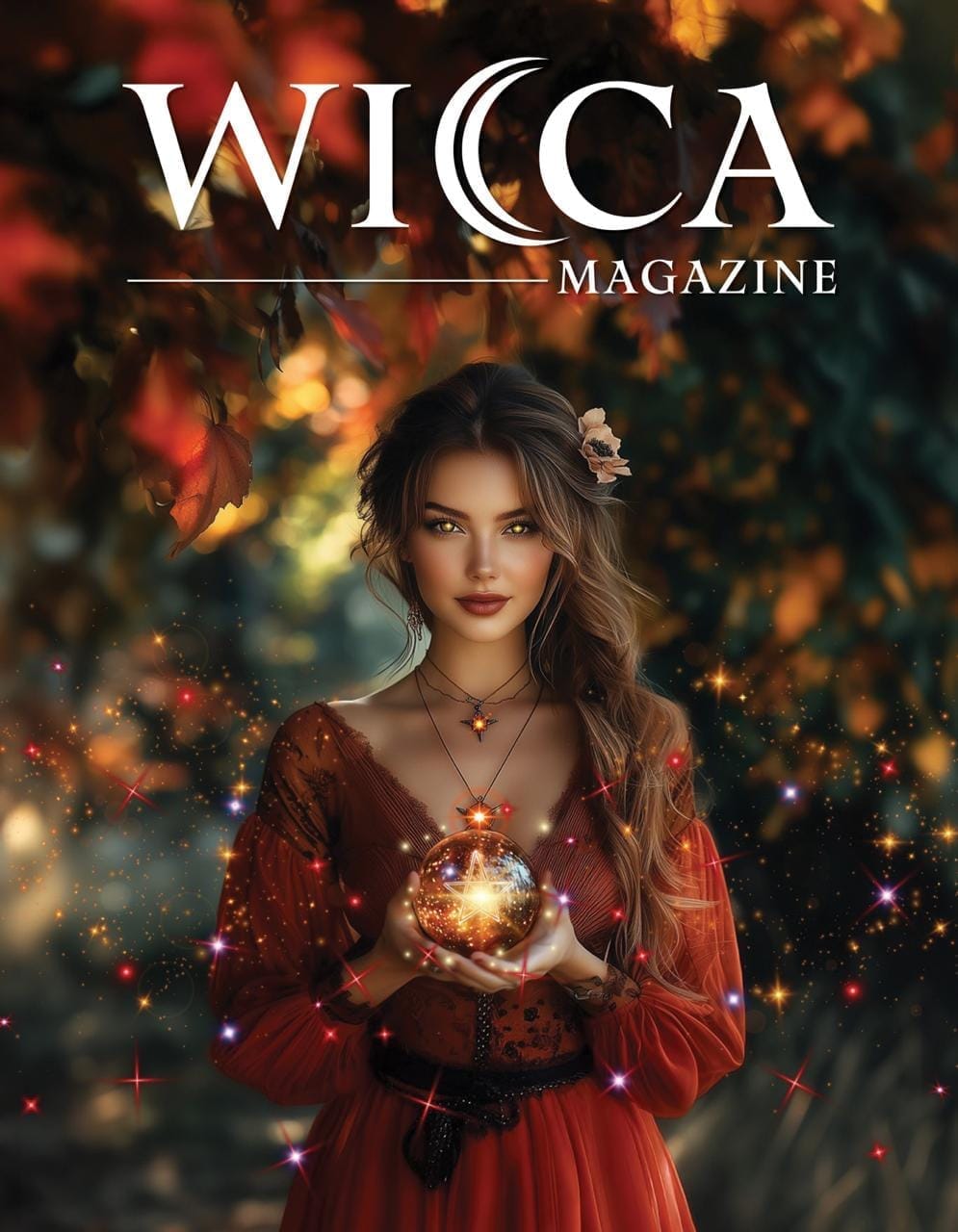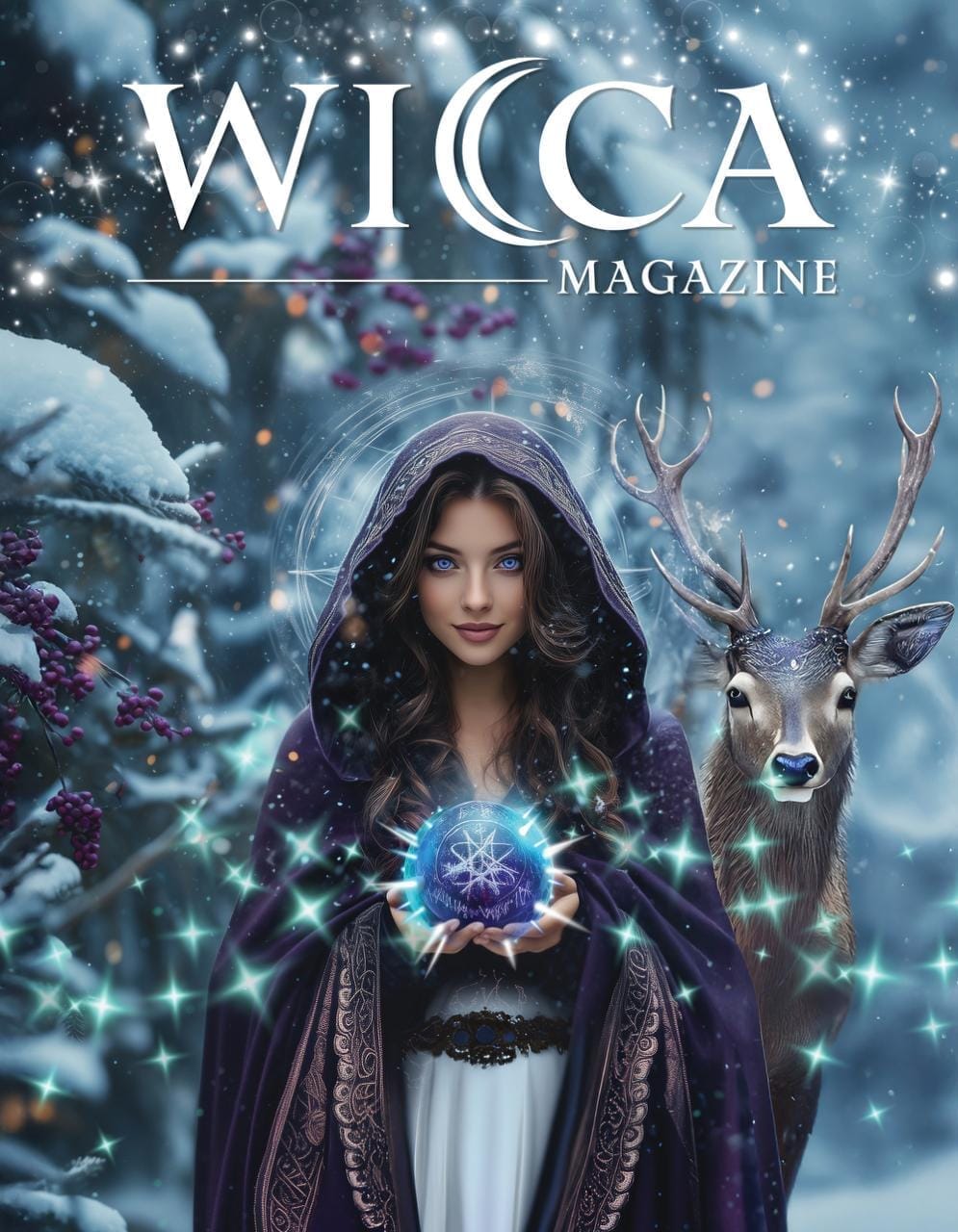


Unlock the Magick of Yule! - Your Wicca Magazine Issue Awaits
Step into the season of light with Wicca Magazine. Each digital issue is a sacred offering of spells, rituals, and Wiccan wisdom — honoring ancient paths and empowering your modern magick. Your craft, your journey, your magickal sanctuary.
As the sixth planet from the sun, Saturn is encircled by a magnificent system of rings that were discovered by Galileo in 1610. The rings are made up of smaller particles that are constantly in orbit. These particles are mostly water and ice, ranging from microscopic to a few meters across. When visible in the night sky, Saturn has a dull, yellowish-brown glow.
In ancient times, there were five planets known other than Earth: Mercury, Venus, Mars, Jupiter, and Saturn. Saturn was the farthest out of the known planets and was often associated with death and old age. For many pagans, the planet Saturn is closely linked to the Crone goddess in the cycle of the year. Saturday is named for Saturn, and while we often associate the weekend with relaxation, celebration, and revelry, astrologically, Saturn is far from the joy the weekend often brings. In fact, attuning with Saturn can bring complicated feelings such as limitation, constraint, and scarcity to the surface. But these feelings have important lessons to teach us.
The Gnostics identified Saturn as the god of early Christian scripture. This god is often viewed as a tyrannical father who is obsessed with the rigid enforcement of the law. But long before the Gnostics, Saturn was the god of agriculture, the founder of civilization, and the creator of social order. Saturn was connected to the natural laws and cycles, therefore also connecting it to conformity. And the rings that encase the planet symbolize the limitations placed upon humankind.
Worshiped by the Romans, Saturn was often depicted holding a scythe as the god of agriculture. And like the Greeks, the Romans continued to tell a similar myth of the god. The legend says that Saturn fled from his angry father to the land where Rome would eventually be built. He taught the people how to farm and cultivate grapes and encouraged them to settle their differences without resorting to violence. Near Capitoline Hill, the Romans built a temple to Saturn that stood for centuries and even made it through a devastating fire.
Saturn is a complex god with many different sides. This is never more evident than during the time he ruled Latium with the Roman god Janus. Janus was the god of gates, beginnings, and doorways for whom the month of January was named. Janus looked both ways—forward and backward—representing the past and the future. Saturn also had two aspects which were represented in his two wives. Ops was the goddess of wealth and abundance, while Lua was the goddess of war and destruction.
All year long, Romans looked forward to their December 17th festival dedicated to Saturn. Saturnalia was later expanded to a full seven-day festival full of banquets, drinking, games, gift exchanges, and gladiator games. Social roles were turned upside down during this time, and people were released from their traditional strict rules. During this time, the King of Misrule presided over the land, a mock king who wore silly clothes and told jokes, people wore casual clothes in the streets, and the masters waited on their slaves. This great harvest celebration mirrors that of modern-day Christmas because as time moved on, the practice of Saturnalia was slowly replaced by this Christian holiday. Some traditions of old were kept, including the exchanging of gifts and feasting.
And while it would seem that Saturn, once again, should be linked to celebration and merry-making, that is not the case astrologically, as Saturn is associated with restrictions, boundaries, and structure. It governs ambition and career and authority and hierarchy. But it also includes the wisdom that comes from old age and solitude. Through the passage of time, Saturn teaches discipline and patience. However, Saturn also both rejects and excludes.
Where there is light, Saturn brings the dark, and where there is heat, Saturn brings the cold, as Saturn brings forth sadness, death, and misfortune. It encompasses isolation, fear, skepticism, and stalling. And while we most often think of these attributes as negative and bleak, they can sometimes be a positive thing in life. The properties of contraction and crystallization create solidity, and it is from this solidity that we reign in some of our wilder qualities.
Saturn can be used to bind and restrict undesirable behavior, whether that is in others or in yourself. Because of this, it is often used in spell work to hold back or inhibit energy. For some, when they have too much Saturn energy, it can manifest in a fear of commitment with plans or relationships, lack of personal accountability, impatience, or the inability to function when times get hard.
Saturn rules Capricorn, which is perfect because Capricorns love rules. Saturn creates a desire to conform to social structures. It is sometimes referenced as the taskmaster of the planets, as it keeps all the others in line. In this way, Saturn is viewed as a father figure. But just as with any authority figure. Saturn can border on the tyrannical, domineering father figure who seeks to mold his children into what he wants and forces them to live up to his standards. This type of domination can lead to children feeling suffocated by their parents.
When each of us is born, Saturn is at a specific point in the sky. A “Saturn Return” is when Saturn returns to the same place in the sky as when you were born. Since Saturn takes 29.5 years to orbit the sun, this happens around someone’s 29 to 30th birthday. Some people may have more than one Saturn Return in their lives. This return of Saturn holds us accountable to our difficult life lessons and marks a period of change in our lives as we reflect upon previous lessons, as Saturn is the great teacher, and even difficult emotions and lessons have much to teach us.
Day: Saturday Number: 3 Colors: black and grey Metals: lead Stones: diamond, onyx, cameo, azabache, hematite, and iron ore Chakra: Muladhara, the Root Chakra Tarot: The Hermit or The World card